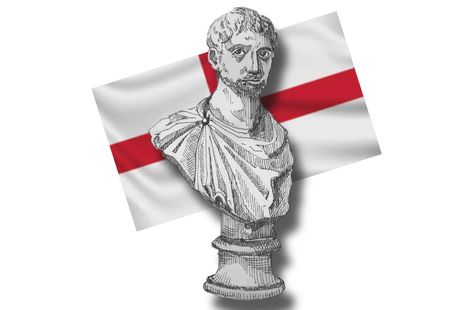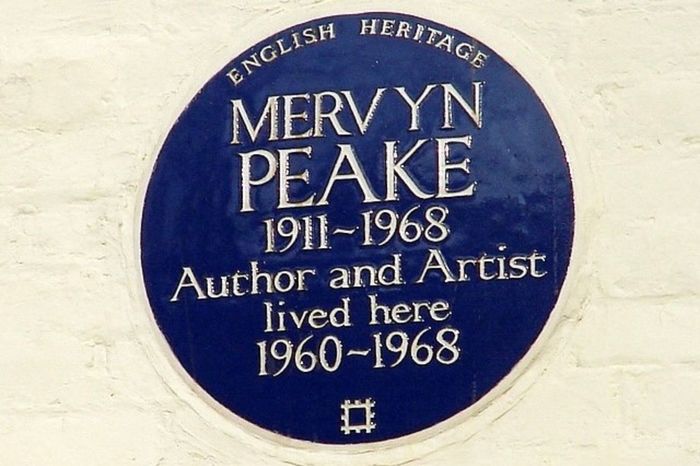St George’s Cross read through Lucan
Sydney Heintz reflects on how flags can symbolise – and problematise – sense of identity

Emblems are battlegrounds of meaning. I was reminded of this when the controversy surrounding St George’s Cross went viral on news outlets last month, provoked by increasing tension over the immigration crisis and support for Reform leader Nigel Farage. The Cross of St George dates back to the Crusades and was originally used as the ensign of the Republic of Genoa later adopted by a military alliance in the pre-Reformation Holy Roman Empire. After the union of Scotland and England in 1603, it was combined with the Scottish St Andrew’s Cross to produce the modern-day Union Jack. Synonymous with national pride, naval power (Dunkirk), and of course, football, it was only until recently that its symbol was one behind which a majority of the British population stood. What interested me, therefore, was why civil unrest should take this particular form, and what it was about flags, and their symbols, that could be weaponised so effectively in service of opposing political ideology.
To answer this question, I’d like to go back to the first century Roman poet Lucan, made famous by his epic De Bello Civili (‘The Civil War’). The Pharsalia (as it is commonly referred to) tells the story of the civil war between Caesar and Pompey, culminating in the Battle of Pharsalus in Northern Greece. It is some of the most disturbing literature left of the Neronian period, not least because its author, along with Petronius and Seneca, was forced to commit suicide as a result of his involvement in the Pisonian conspiracy (which attempted to replace Nero), and because the poem itself deals almost exclusively in the gore and inhumanity of warfare. I write of Lucan because, like the headlines, the Pharsalia is full of flags: the first horror of civil war is that signa contra signa feruntur (‘standards face standards’). Later, when Caesar attempts to raise the aquila (the Roman eagle) of the legion at Ariminum, it trembles and resists being moved. One of the final images we are left with in the fragmentary tenth book is of standards briefly appearing over the Nile as Caesar continues his campaign: flags, for Lucan, both begin and end civil war.
“What once marked cohesion becomes a grotesque spectacle of division”
Traditionally, each legion had only one aquila, carried by the aquilifier (the standard-bearer), and to lose the aquila in battle was considered a catastrophic disgrace; meanwhile, capturing an enemy’s aquila meant victory. In Lucan, however, identical aquila face one another, thereby collapsing visual differentiation between one’s own camp and the opposition: as he declares at the poem’s outset, “when standards that once had faced the foe are brought to oppose each other, Rome’s strength turns against herself” (trans. Susan Braund). What once marked cohesion becomes a grotesque spectacle of division. Something similar, I would argue, is happening to the Cross of St George: reclaimed by immigrant communities, commodified in fashion, or challenged when waved by far-right groups, the flag is constantly re-signified and resisted, and in doing so stages a crisis of meaning. As Lucan shows, the first sign of societal collapse is in the fracturing of shared symbolic language, shared identity.
“In both Lucan’s case and ours, the emblem’s instability is symptomatic of a deeper fracture”
In the Pharsalia, the sight of mirrored standards annihilates the very possibility of an external enemy: Rome’s aggression, finding no outlet abroad, consumes itself. Civil war becomes a form of self-recognition and self-definition. The same mechanism is now at work in the UK, where the flag that once demarcated the island from the world is turned inward, repurposed to police the boundaries of ‘Britishness’ itself. Indeed, the anxiety that animates debates over St George’s Cross or the Union Jack is not simply about immigration, but about the instability of national identity in an age when the symbols that once guaranteed belonging have lost their authority. In a 2012 survey, only around 30% of respondents thought the flag representative of modern and diverse Britain, with a worrying three in five to two thirds associating it with the British Empire. This erosion of consensus about the flag’s symbolic associations has become a locus for competing political narratives – imperial, insular, multicultural, and postnational – none of which can wholly contain the others. In both Lucan’s case and ours, the emblem’s instability is symptomatic of a deeper fracture: a polity uncertain whether its flag might still faithfully capture the identity it claims to represent.
When Caesar’s and Pompey’s armies advance towards each other in the climactic seventh book, Lucan writes that the standards could hardly be torn up from the ground: “adrip with tears, only as far as Thessaly did they belong to Rome and to the state”. In other words, only this far could the war continue to masquerade as political. At Thessaly, the standards cross (like Rome itself) from the realm of public representation to the private site of warring imperial interests between Caesar and Pompey, resigning themselves (albeit reluctantly) to autocratic intrigue. It is a bleak outlook on Rome, and the Neronian emperorship it eventually gave birth to. Today, of course, we are faced with a polarized leadership of our own, and flags which point to a Britain unsure of what – or who – it includes. Whether we turn on each other, or whether we learn to live as one, depends on our recognizing a shared civic space larger than any one faction or flag. Only then, as Lucan writes, can we tranquili vivere (live in peace).
 News / Caius mourns its tree-mendous loss23 December 2025
News / Caius mourns its tree-mendous loss23 December 2025 News / Clare Hall spent over £500k opposing busway 24 December 2025
News / Clare Hall spent over £500k opposing busway 24 December 2025 Comment / Yes, I’m brown – but I have more important things to say22 December 2025
Comment / Yes, I’m brown – but I have more important things to say22 December 2025 Comment / The ‘class’ of Cambridge24 December 2025
Comment / The ‘class’ of Cambridge24 December 2025 Interviews / Politics, your own way: Tilly Middlehurst on speaking out21 December 2025
Interviews / Politics, your own way: Tilly Middlehurst on speaking out21 December 2025








